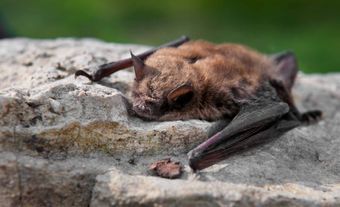Of the world's 23 species, only the N American porcupine (Erethizon dorsatum) occurs in Canada, throughout mainland FORESTS and thickets.
Description
Canada's second-largest RODENT (up to 18 kg and 103 cm long, including a 30 cm tail) has a stout, black and yellowish white body bearing 30 000 sharp, slightly barbed quills (up to 8 cm long) on upper parts and tail. When cornered, a porcupine erects its quills and lashes its tail. Quills are easily dislodged from the porcupine's skin, but cannot be thrown. MAMMAL predators (eg, FISHERS, WOLVERINES) avoid the quills by attacking the almost quill-free head. Slow-moving porcupines are vulnerable to automobiles and fires.
Reproduction and Development
One young is born 7 months after fall mating. It soon walks and climbs, is weaned within 10 days, and leaves its mother by fall. Porcupines are usually nocturnal and do not hibernate.
Diet
Usually solitary, porcupines sometimes share good dens or feeding areas. They eat bark, buds, and the leaves and twigs of trees and other PLANTS. Food, cut by 4 chisel-shaped incisors, is ground by 16 ridged cheek teeth. Some trees are damaged but extensive harm to forests is rare. Porcupines gnaw salty objects, tools and wooden buildings, and may damage corn or alfalfa.

 Share on Facebook
Share on Facebook Share on X
Share on X Share by Email
Share by Email Share on Google Classroom
Share on Google Classroom






